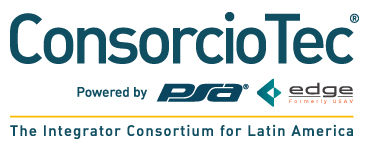When we talk about segmentation in digital marketing we refer to marketing techniques that aim to classify and identify leads in marketing in our database. In this note we share why it is important to segment them and what are the benefits for SMEs that identify and separate these contacts.
Thanks to some techniques we can be able to automatically classify and assess both the interests of a user and the phases of the conversion funnel in which they are, which streamlines workflows between marketing and sales departments.

It has always been important to understand that there are various market segments with different needs. We are not all the same, nor do we all like the same thing.
Segmenting is, ultimately, understanding that these differences imply different care options, and that affects each of the marketing variables.
You can think like this: customers want and need different things, and being able to understand those differences allows us to deliver more value, which is ultimately the real goal of those of us who work in marketing: to deliver value and create relationships that are based on that.
Pretending that today a single product can effectively reach everyone is quite illusory, and in the case of SMEs it is almost suicide. There is no budget to support this.
Segmenting leads in marketing allows us to better target efforts in those that can be considered more interesting and, therefore, do better what we want to achieve as companies and organizations.
At the moment the concept of digital marketing comes to play an important role: in more general terms, it could be understood simply as the application of the same marketing principles, but now taken to digital environments.
The process of segmentation of leads in marketing
The matter starts from a simple point, which is what is known as the marketing process that consists of four steps:
- Understand
- Design
- Execute
- Relate
The only thing we do in marketing is try to understand customers to, from that, plan strategies that allow them to serve them better; then we seek to execute those strategies and improve the relationship with each execution.
The issue is that knowing allows you to interact better. But knowing doesn't just mean knowing what people do (i.e., transactional), but understanding the why of those behaviors (the deep reasons).
Many managers don't really know their customers; they think they know them, which is not the same. When you're on the 25th floor and you look down the street what you see, it's not people, but just points. That's not knowing.
Many SMEs have this enormous advantage, but they do not know how to take advantage of it. When you are a manager of a small company, you usually actually have the position of 'manager'; this encompasses what you do from the manager to the courier, and that's what allows us to stay in touch with customers.
When a salesperson hears a customer say "you're sending me a product one day, and another product another day," that information can lead to the creation of a different delivery strategy, for example.
The customer may prefer to have everything delivered together if what they have is a particular production process. There, from a simple diagnostic phrase, you can find a new strategy.
A very important tip: leads who receive a commercial offer and do not buy your solution should not be discarded, they can continue to be nurtured, through email automation flows, until they reach the right time to be approached again.
How do I consider that a lead in marketing is qualified to be part of my potential customers?
Most social media campaigns are very out of focus regarding selling. They focus on scope variables, and not transactions. 15% of marketers measure the success of their content programs based on the number of marketing leads they generate.
A company can make a post for Facebook or Instagram that reaches 20,000 people. And? Is that what you need? Is that the valuable thing? Reaching a lot of people?
When your products are clearly massive, and have little differentiation, outreach strategies are usually useful; but when your products are more specific, more niche, the reach makes very little sense.
There is one issue we have forgotten, and it is the customer's time. The moment of attraction is not the same as the moment of closure or the moment of maintenance. And that's what many companies forget, particularly among those who intend to do automated marketing.
That is why today many companies continue to fall into the deception of saying: "I have to let everyone know that I exist". Automation technologies enable that.
But, quickly most companies realize that this serves for so little, and if they are B2B companies even more.
The main recommendation would be focused on focusing more on customers and the segmentation of them than on the segmentation of leads in marketing of those who are not yet customers. It may be a professional deformation, but there is no better client than the one who today is the best client.

